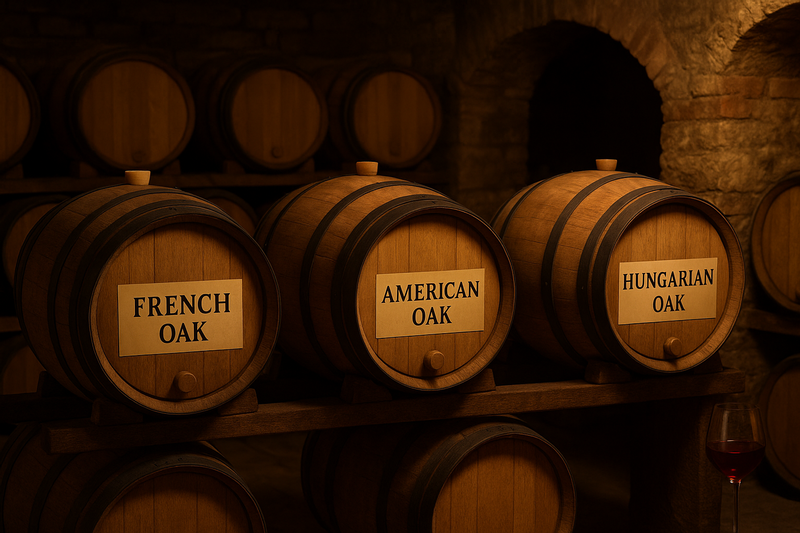Barrel Talk: How Oak Shapes the Soul of Wine

At Willowcroft, every barrel in our cellar has a story to tell—about the forest it came from, the fire that toasted it, and the wines that called it home. Oak barrels aren’t just vessels; they’re power tools that shape a wine’s texture, aroma, and flavor in ways that are both subtle and profound.
Let’s start with the basics: why use oak at all?
Oak allows minute amounts of oxygen to seep into the wine over time—a slow exchange that helps soften tannins, stabilize color, and encourage complexity. But that’s just the beginning. The wood itself contains compounds like lignin, lactones, and tannins that interact with wine to create distinctive flavor notes—think vanilla, spice, coconut, and clove.
Different oak species contribute different flavors and structures:
- French Oak (Quercus petraea): Known for its tight grain and slow extraction, French oak imparts elegant spice notes—cinnamon, clove, and nutmeg—along with a silky mouthfeel. It’s subtle and refined, often used for age-worthy reds and delicate whites.
- American Oak (Quercus alba): With a looser grain, American oak offers a more aggressive flavor profile—coconut, dill, and sweet baking spices like vanilla and nutmeg come forward more quickly. It’s a favorite for bold reds and rich whites that can stand up to its signature punch.
- Hungarian Oak (Quercus robur): Grown in the Zemplén Mountains, Hungarian oak splits the difference between French and American. It brings soft spice and creamy texture, with less sweetness than American oak and more expressiveness than French. A rising favorite for structured whites and balanced reds.
Coopers (barrel-makers) apply fire to the inside of the barrel—a process called toasting. This heat treatment breaks down oak compounds, creating new flavors.
- Light Toast: Preserves more of the wood’s raw tannins and structure. Ideal for whites, as it adds subtle spice without overwhelming freshness.
- Medium Toast: The most versatile—offering a balance of vanilla, caramel, and soft clove. It is often used for reds like Merlot or Cabernet Franc.
- Heavy Toast: Think smoke, roasted coffee, dark chocolate—great for big reds like Petit Verdot or Chambourcin that can handle the depth.
Not all barrels make the same impression—especially as they age.
- New Oak: Delivers the most substantial impact, with the most flavor extraction. Wines aged in new barrels will show clear notes of toast, spice, and structure.
- Used Oak: A second or third vintage in the barrel gives a more restrained oak influence. Used barrels still allow for micro-oxygenation, but the flavor contribution is gentler.
- Neutral Oak: After several uses, barrels no longer impart much flavor but continue to support the wine’s development through slow oxygen contact. They're a subtle tool, often used to preserve the natural fruit and terroir expression.
Oak barrels aren’t just storage—they’re storytellers. Each barrel influences a wine’s aroma, flavor, and mouthfeel, often in ways that define the wine’s identity. A typical 60-gallon barrel costs $900–$1,500, depending on the oak’s origin and toast level.
At Willowcroft, we thoughtfully blend new, used, and neutral barrels to craft balanced wines that highlight both the vineyard and the wood. Curious to taste the difference? Join us in the tasting room and ask which of our wines saw oak—you might be surprised how much that barrel adds to your glass.
Want more vineyard secrets? Explore our blog series and discover how elements like dry farming, yeast, and rootstock quietly shape every bottle.

